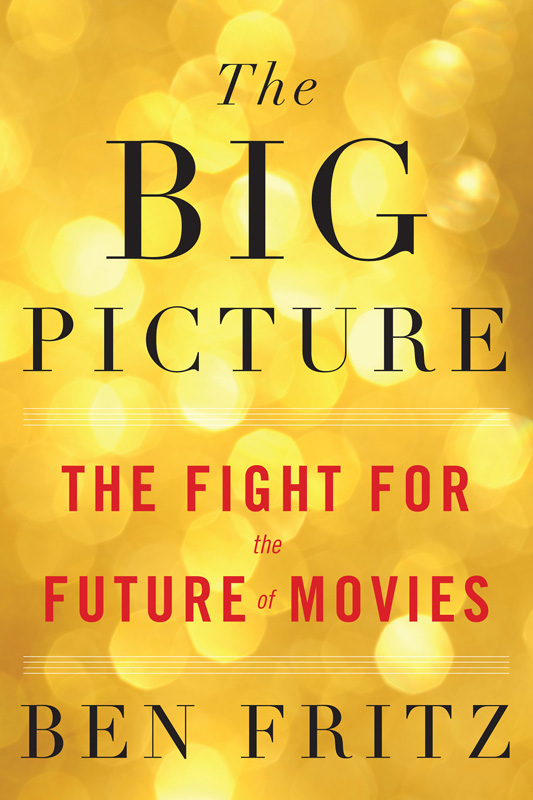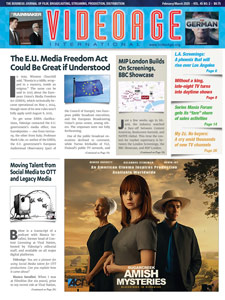“I loved that job.” That’s what Amy Pascal told The New York Times in June 2017 about her stint as chairman of Sony’s Motion Pictures Group. “I loved it so much, to be honest, that I didn’t allow myself to believe that the movie business had moved on.”
Hollywood’s ongoing development — its improvement or decline, depending on who you talk to — is the subject of Ben Fritz’s comprehensive book-length investigation, The Big Picture: The Fight for the Future of Movies (304 pgs., Houghton Mifflin Harcourt, 2018, U.S. $27). The first half of the book chronicles the rise of the franchise film era using Sony Pictures as a case study, and Pascal plays a central character.
Over the first decade of the 21st century, Hollywood film execs learned something important. “What they know is that branded franchises work,” Fritz writes. Instead of opting for the arty, riskier pictures, the studios retailored their slates. Big-budget “event” movies with the potential to sire innumerable sequels and spinoffs, creating a cinematic universe that would lure audiences and secure long-term value, did financially better. Sony’s story is a cautionary tale of what happens when a studio fails to do just that. Sony’s saga — its successes in the mid-2000s and its losses in the subsequent decade — is a fascinating one.
In focusing on Sony, Fritz, The Wall Street Journal’s film and entertainment staffer, had another advantage — the November 2014 hack that leaked tens of thousands of emails and documents, and provided an unadulterated look at communications between the studio’s executives. The Big Picture, Fritz made clear in his opening lines, would not have happened without it. “This book is based, in part, on stolen material. I won’t make any bones about it.”
The emails were an embarrassment for the Sony Pictures’ corporate entity and many of its higher-ups, including Pascal, whose hysterical correspondence led to her very public resignation the following spring. The media attention brought on by Pascal’s insensitive remarks on former President Barack Obama and digs at celebrity talent was bad publicity, to say the least. At the 2015 Women In Media conference, with her characteristic blend of sarcasm and irreverence, Pascal said, “All I did was get fired.” (Michael Lynton, who worked alongside Pascal as chairman and CEO of Sony Pictures, would later refute any connection between Pascal’s emails and her resignation, explaining that the latter was due to the film unit’s poor performance.)
Fritz took on a daunting task in stringing together the do’s and don’ts of Sony. His book is expansive in scope, with its first half covering the halcyon days of Sony under Pascal and Lynton, the sudden drop in DVD sales in conjunction with the uptick in VoD rentals and downloads, the frantic hunt for a franchise, the infamous hack, the rise of rivals Marvel Studios and Netflix, the death of mid-budget dramas, and the TV-film culture wars.
The second half of The Big Picture goes a different way, plotting various phenomena, people, and companies that are making headway, both domestically and globally, in an attempt to forecast what’s next for the motion picture industry. What Fritz finds is that the key players are not in it for the art of making movies, and that interesting titles are unexpectedly being produced and distributed by companies with other agendas.
For example, Fritz says, “Disney may have been generating record-breaking profits from its Marvel, Pixar, and Star Wars films and live-action remakes of animated classics, but ultimately its movie studio existed to launch and maintain franchises that sold toys and t-shirts and drew tourists to theme parks.”
Paradoxically, Fritz sees Amazon as an unlikely champion of art-house cinema. Exactly because the retail behemoth does not have to worry about the success of individual films or sub-par theatrical runs, its studio unit can focus on curating a quality selection. As Fritz reminds the reader, “Amazon made its money selling books and shoes and Kindles, not video subscriptions. And it didn’t have a digital-first agenda.”
Amazon’s success with Manchester by the Sea, which received an Academy Award nomination for Best Picture, and which won in the Best Actor and Best Screenplay categories, was evidence that, as Fritz suggests, “[Amazon] could do what Hollywood no longer could: prove a sustainable, supportive home for interesting, original indie movies.”
In one of the more compelling chapters, Fritz shifts the limelight to Hollywood financiers in China. “By the mid-2010s, proposals from Chinese companies eager to put their own money into Hollywood arrived with increasing regularity on studio doorsteps,” Fritz writes. Among the key moments in the relationship between Hollywood and China, he indicates the Wanda Group’s investment in Sony Pictures, and the IMAX expansion in China that was sparked by the release of Avatar.
Fritz also smartly mentions the influence that the state-owned China Film Group and Film Bureau exerted in scheduling release dates for other American films, and their editing out scenes or images that didn’t align with the nation’s character. Fritz notes, “Instead of indirectly controlling Hollywood by forcing studios to anticipate what would make money in their country, the Chinese were starting to take direct control.” He continued, writing that “The future of Hollywood is in large part being written by China.”
For his conclusion, Fritz returns to Sony Pictures and Amy Pascal. Doug Belgrad, who spent 27 years climbing the corporate ladder at Sony and was one of Pascal’s closest confidantes, left the company to start his own production banner in 2016. In Belgrad’s venture, Fritz pinpoints what he calls “a potentially transformative concept”: “A studio executive could leave the traditional Hollywood system, start his own venture with outside money, and in the process start giving studios exactly the types of movies he couldn’t make while on the inside.”
While The Big Picture is deeply informative, it comes across as slightly scattered. But that may also be part of the story Fritz is trying to tell. The industry has moved on from the “traditional economics of film, whereby each production aims to be profitable through a mix of box-office dollars, DVD sales, and television licensing,” to other financial models, markets, and even countries. Tomorrow’s studio executives, Fritz predicts, “will no longer have to obsess, as Amy Pascal did, about whether every individual movie will be profitable enough on its own to satisfy a corporate parent’s expectations.”
(By Luis Polanco)
Audio Version (a DV Works service)












Leave A Comment